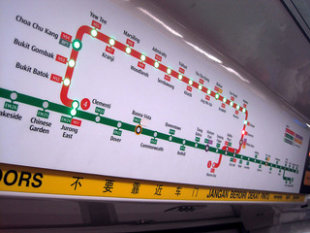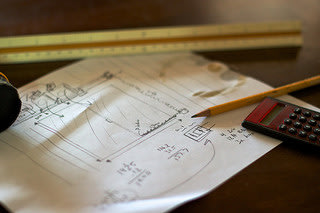insight
工程技術,地產投資,信仰家園,時尚生活The humanity of property investors has an “off” switch, and it’s flicked during valuations. Tell them a bungalow was a treasured family home, and they’ll roll their eyes and insist on the same discount. Tell them the last resident murdered 27 people and made the curtains out of flayed skin, and they’ll shrug and ask if the floor’s real parquet. They’re hardcore that way. Here’s how you can emulate their rational, profit-sniffing methods:
There’s plenty of places less crowded and noisy. You just have to be Canadian to live there.
1. Surrounding Property Value
This is one of the most reliable ways to estimate property value: Find the worth of the neighbours’ houses.
For the most part, units on the same block will share the same problems and advantages. If you’re five minutes from the train station, so’s your neighbour. If a passing train rattles the windows off your living room, your neighbours’ simultaneous swearing will form a chorus.
So when it comes to price, always check listings in the same general area. There may be variables (e.g. some units have a slightly better view, or are closer to the neighbourhood mall). But you’ll at least get a sense of the price range.
This is doubly important for landlords. The rental worth of a unit can fluctuate, based on new amenities (e.g. new train station) and what surrounding landlords are charging. By keeping close watch, you can tell when the time’s right to raise rent…or to slightly undercut the competition.
2. Market Timing
 Hourglass
Hourglass“Fine, put it there. But at least stop making the ‘tick tock’ noise while I sign the option.”
Sometimes it’s not the house. It’s when you buy it.
You’ve seen what Singaporean herd instincts are like. When the property bubble’s rising, you can sell a malfunctioning port-a-toilet at $5 per square foot. But buy at the peak of the bubble, and you’re no longer “investing in property”. You’re just catering to the delusions of a very lucky seller.
Veteran property investor Charlie Ng suggests:
“…watch the volume of transactions, not just the price. When the volume of transactions go up, but the prices haven’t shot up yet, to me that is the ideal time to buy.
Also, look for times when HDB starts releasing a lot of those ‘sandwich’ class flats: DBSS, ECs, and so on. Normally that is a sign of market demand, as people are trying to reach for more expensive properties. Very often, prices start to go up after you see these properties.”
Jumps or drops in property sales volumes usually make the news. Otherwise, follow us on Facebook for updates.
3. Check the URA Master Plan

…and our capital gains projection is based on expertly researched, super secret information.
Check the Urban Redevelopment Authority’s master plan for the area.
This is the closest you’ve got to a working crystal ball. The master plan doesn’t just tell you which amenities will appear, it tells you when. As we’ve pointed out before, timing’s important for amenities like MRT stations (rental values drop when station construction starts, and rise only upon completion).
Long term investors benefit the most from studying the master plan. With the government developing non-central regions (e.g. Punggol and Jurong West), it’s possible to buy in young estates at a low price, then profit when they mature.
The master plan is a good way to gauge capital appreciation (the rate at which property value grows). The more amenities planned for the neighbourhood, the better the eventual payoff.
4. Heat and Noise
 Swan in river
Swan in riverAnd you get a splendid view of the local wildlife, just before it dies of heatstroke.
New home buyers often fail to spot heat and noise pollution.
For obvious reasons, most viewings are strategically timed. You’ll be brought into the house at a cool time of day, when the neighbours aren’t acting like a Crime Watch feature on domestic violence (which for all you know, happens every day after six).
Charlie waves a warning finger about facings and heat:
“At certain hours, the view from big picture windows or whatever can look very nice. But at one o’clock or three o’clock, you may find the nice view is like a microwave oven. Some units are directly facing the sun, then you better be prepared to turn on the air-con during the day.”
Likewise, if your neighbours turn out to be noisy, there’s not much you can do about it later (Well, there is, but I’d remind you that Everitt Road earned its own infopedia page that way).
This is more a factor for owner-occupiers than investors. Landlords, or buyers intending to sell in five years, can put up with all this. But if you’re going to live there for 15 years, I think it’s worth visiting the house at different hours to check.
5. Check the Current Property Loans Market
 Physics homework
Physics homeworkSo this is our EZ-Home loan, which requires only passing familiarity with with Fermat and the Bolzano-Weierstrass Theorem, and also…
For investors, home loan interest rates should factor into the buying decision.
For example: During the past decade, typical home loan interest hovered around 1.7% (frequently falling to 1.3%). Now consider what happens if an investor uses CPF to cover such a loan: CPF grows at 2.5%, which means it grows faster than the interest of the loan. It’s almost as if some investors have been borrowing for free.
The home loans market also affects the return on investment. Buy property when the home loans market is at a peak (say 4%), and the capital appreciation of the property gets swallowed by the high interest.
For owner occupiers, this isn’t really a factor (you buy when you need to, whatever the home loans market is like). All you can do is find the cheapest rate. But if you’re thinking investment, look beyond property prices, and weigh in property loans as well.
You can check home loan rates for free, at sites like SmartLoans.sg.






